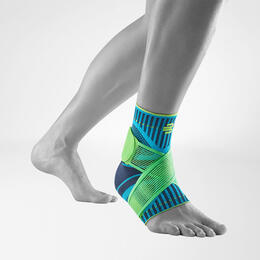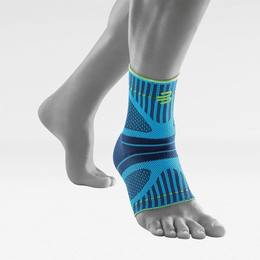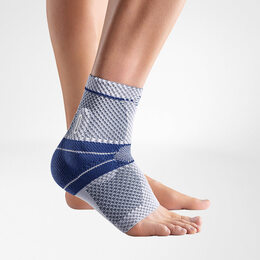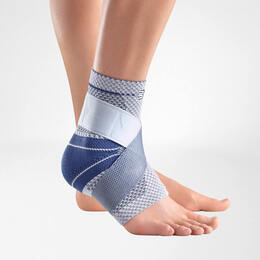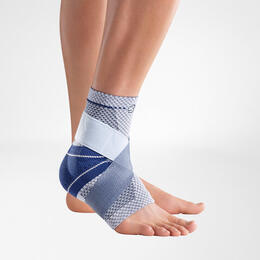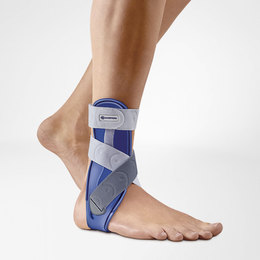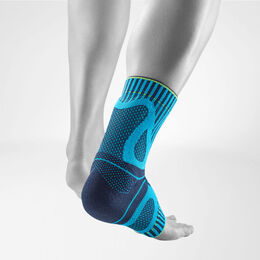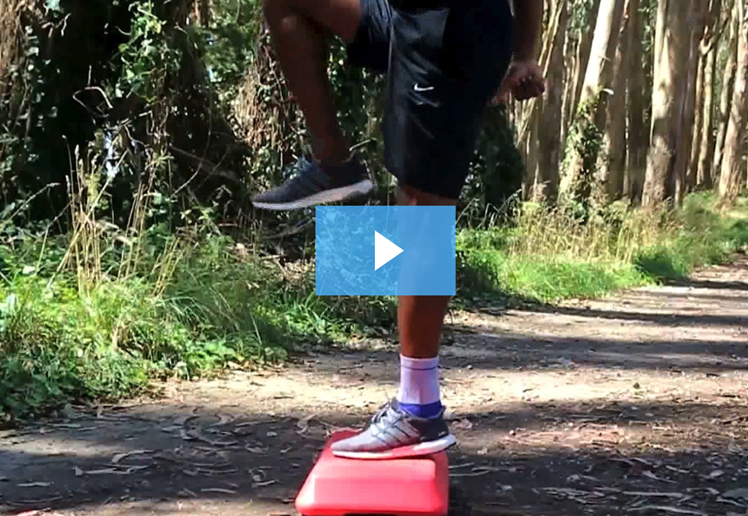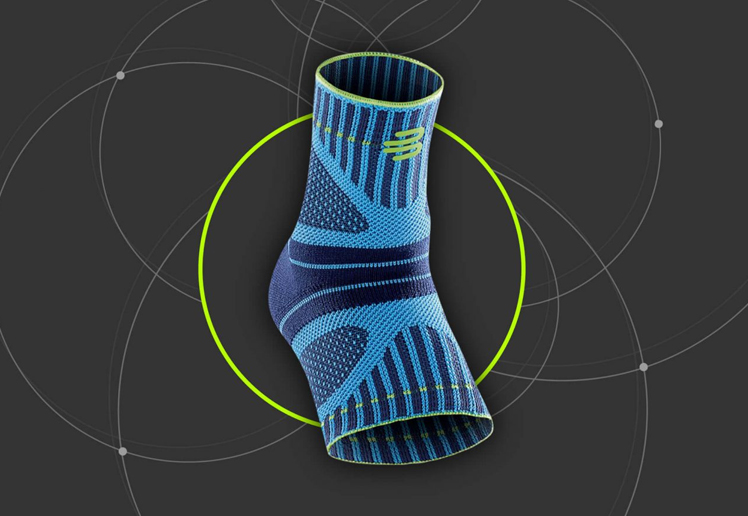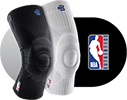Ankle injuries can happen to anyone. Just one careless step when walking in the woods or a small sporting mishap is enough to cause a twisted ankle. Rapid initial care is important, but in the long run what really helps to restore stability to the ankle is a treatment regime that is carefully tailored to the injury. Read up on different types of ankle injuries, how they are treated, how to promote stability following an injury and which ankle braces can help.
- Ankle sprains - This is one of the most common sports injuries and often leads to instability. Correct diagnosis is crucial for treatment.
- Supination trauma - The ankle twists outward far more often than inward. This can cause damage to the joint, ligaments, and capsule.
- Achilles tendon - Pain in the Achilles tendon should not be ignored. It could be a sign of achillodynia, and in severe cases could result in tearing of the Achilles tendon.
- Pulled ligament in the ankle - The ankle is well supported by ligaments. Excessive movements or forces can cause these ligaments to overextend and sustain damage.
- So you’ve twisted your ankle – now what? - A twisted ankle does not always cause further problems. But what really goes on in the ankle, and what are the possible consequences?
Ankle Pain Facts:
- During movement, the ankle supports five to seven times the weight of the body, meaning it has the heaviest burden out of all the body’s joints.
- Osteoarthritis in the ankle is often the result of accidents and sporting injuries that have not been fully treated.
- 87% of all athletes suffer a ligament injury at some point in their career.
- 20 to 40% of patients who have twisted their ankle once end up suffering from long-lasting symptoms.
The ankle joint is the complex connection between the bones of the lower leg and the top of the foot (the tarsal bones). The upper ankle is where the joint surfaces of the shin bone (tibia), calf bone (fibula), and ankle bone (talus) meet. Here, the shin and calf bone form a groove covered with smooth joint cartilage, the ankle groove, which fits round the talus from above. The underside of the talus, together with the heel bone (calcaneus) and the navicular bone (os naviculare), form the lower ankle joint, which strictly speaking consists of two independent joints. This complex structure is held together by strong ligaments that govern the range of motion of the joint. Every joint is also surrounded by a capsule of connective tissue.
An ankle sprain occurs when one or more of these joints is moved beyond its normal physiological range with a high level of force. As the ligaments are only elastic to a certain extent, they are strained if such overloading occurs, with painful results. If the elastic limit of the ligaments is exceeded, they may suffer a partial or full tear. This is then referred to as a rupture (ligament tear in the ankle) or partial rupture, which results in a tangible loss in stability in the ankle. If the ligaments tear away from their attachment site, bone fragments may also be pulled away from the joint, which is visible on an x-ray. In the case of a sprain trauma, the joint capsule is usually damaged. This is referred to as an injury of the complete capsular ligament apparatus. All of these outcomes are grouped together under a diagnosis of ankle sprain or sprain trauma.
The initial symptoms appear immediately after the ankle is sprained. Taking steps, moving, or putting weight on the affected foot usually causes pain. The joint swells rapidly, bruising (hematoma) is common, and the injured area is extremely sensitive to pressure. However, the type and extent of the injury can only be determined via a thorough examination. X-rays and other imaging techniques show the physician which anatomical structures have been affected. For example, it is possible to determine whether the ligaments have simply been overextended, or whether they have been partially or fully torn. These techniques also enable the physician to diagnose injuries such as capsule ruptures or avulsion fractures.
The affected joint should immediately be immobilized, iced, and elevated. A medical-grade compression support reduces the extent of the swelling and ensures that the injured tissue is not subjected to further stresses before it can be treated. The medical treatment given depends on the extent of the injury, which is divided into three grades of severity:
- Grade 1: Overextension of the ligaments without damage or joint instability
- Grade 2: Severe overextension or partial rupture of one or several ligaments without joint instability
- Grade 3: Complete ligament tear in the ankle joint and instability of the joint
Most ankle sprains are treated conservatively, in other words without surgery. This usually involves resting the joint for several days in an ankle brace and, depending on the severity of the injury, reducing strain on the joint with walking aids. Painkillers, cold therapy (ice or cold air), or lymph drainage (for extreme swelling) may be used in addition.
Once the highly acute phase has passed, physical therapy (PT) can begin. The main aim of PT is to restore the full range of motion and to train the strength and coordination of the joint in order to stabilize its muscles and thus reduce the risk of reinjury.
However, avulsion fractures and complete ruptures where the torn areas are no longer in contact with one another usually have to be treated with surgery. Here, ligament suturing is carried out to reattach the ends of the ligament. Avulsion fractures can be fixed with a screw so that the bone fragments that have been torn away can fuse back together with the bone.
An ankle brace or support from Bauerfeind can be used in ankle sprains of varying degrees of severity.
Depending on the treatment plan your healthcare provider may recommend a rigid-component brace like MalleoLoc. It is suitable for use in conservative treatment, as well as after surgery. The brace sits close to the body, while its thermoplastic properties adapt perfectly to the individual shape of the foot, providing optimum support and stability to the injured region. With these features, it provides effective strain relief for injured ligaments in the foot. The MalleoLoc can be worn in outdoor shoes or sports shoes and enables the normal heel-to-toe movement of the foot. This allows the injured ligaments to recover more quickly and the normal physiological movement patterns associated with walking can be regained at an early stage.
For more moderate sprains a medical-grade compression support like the MalleoTrain, MalleoTrain S and MalleoTrain Plus may be more suitable. These supports provide stability and pain relief without the rigid, mobility-reducing components of a hard brace. The MalleoTrain line is soft, moisture-wicking and machine washable, offering a range of options like stability taping straps and anatomical gel pads that gently massage affected tissue.

